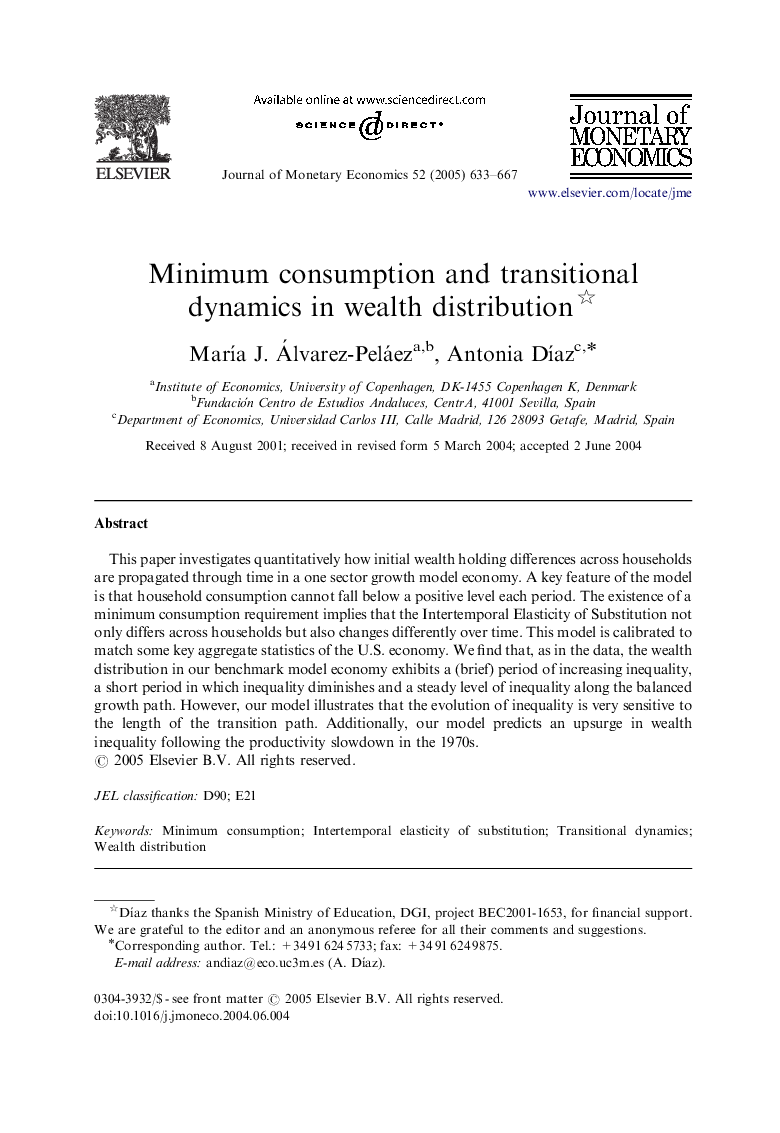| Article ID | Journal | Published Year | Pages | File Type |
|---|---|---|---|---|
| 10478784 | Journal of Monetary Economics | 2005 | 35 Pages |
Abstract
This paper investigates quantitatively how initial wealth holding differences across households are propagated through time in a one sector growth model economy. A key feature of the model is that household consumption cannot fall below a positive level each period. The existence of a minimum consumption requirement implies that the Intertemporal Elasticity of Substitution not only differs across households but also changes differently over time. This model is calibrated to match some key aggregate statistics of the U.S. economy. We find that, as in the data, the wealth distribution in our benchmark model economy exhibits a (brief) period of increasing inequality, a short period in which inequality diminishes and a steady level of inequality along the balanced growth path. However, our model illustrates that the evolution of inequality is very sensitive to the length of the transition path. Additionally, our model predicts an upsurge in wealth inequality following the productivity slowdown in the 1970s.
Related Topics
Social Sciences and Humanities
Economics, Econometrics and Finance
Economics and Econometrics
Authors
MarÃa J. Álvarez-Peláez, Antonia DÃaz,
